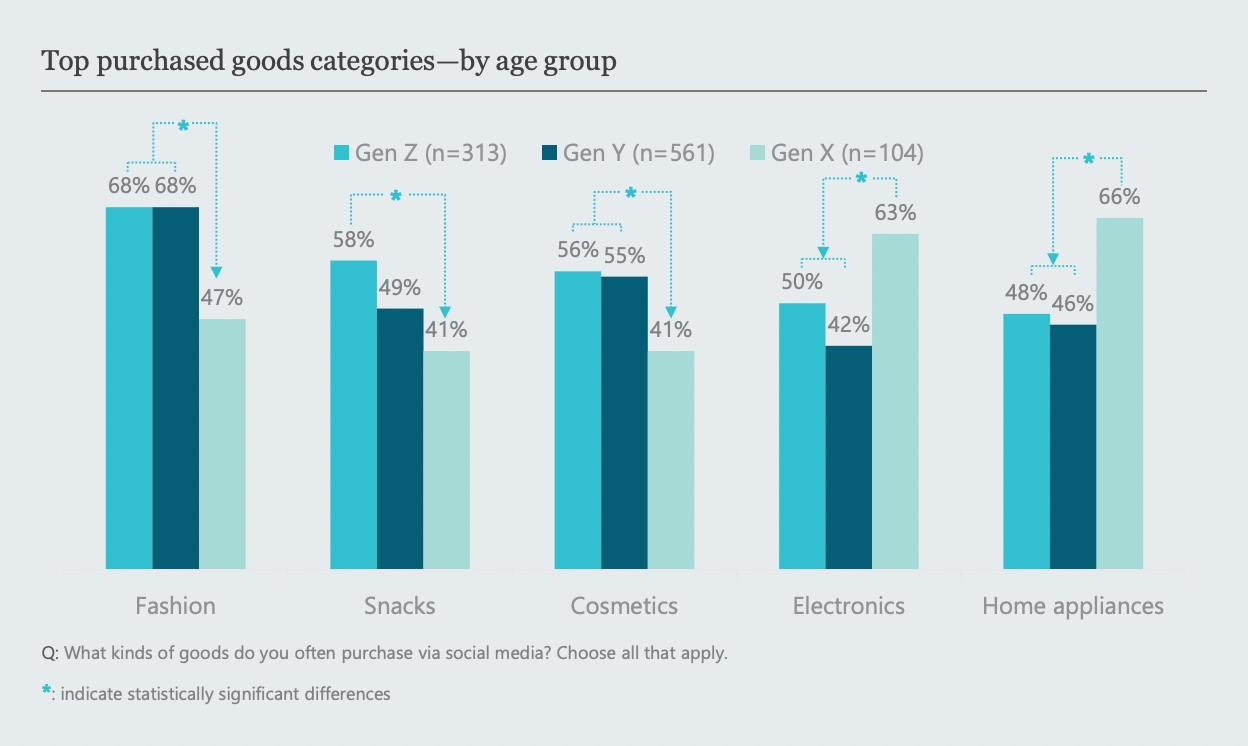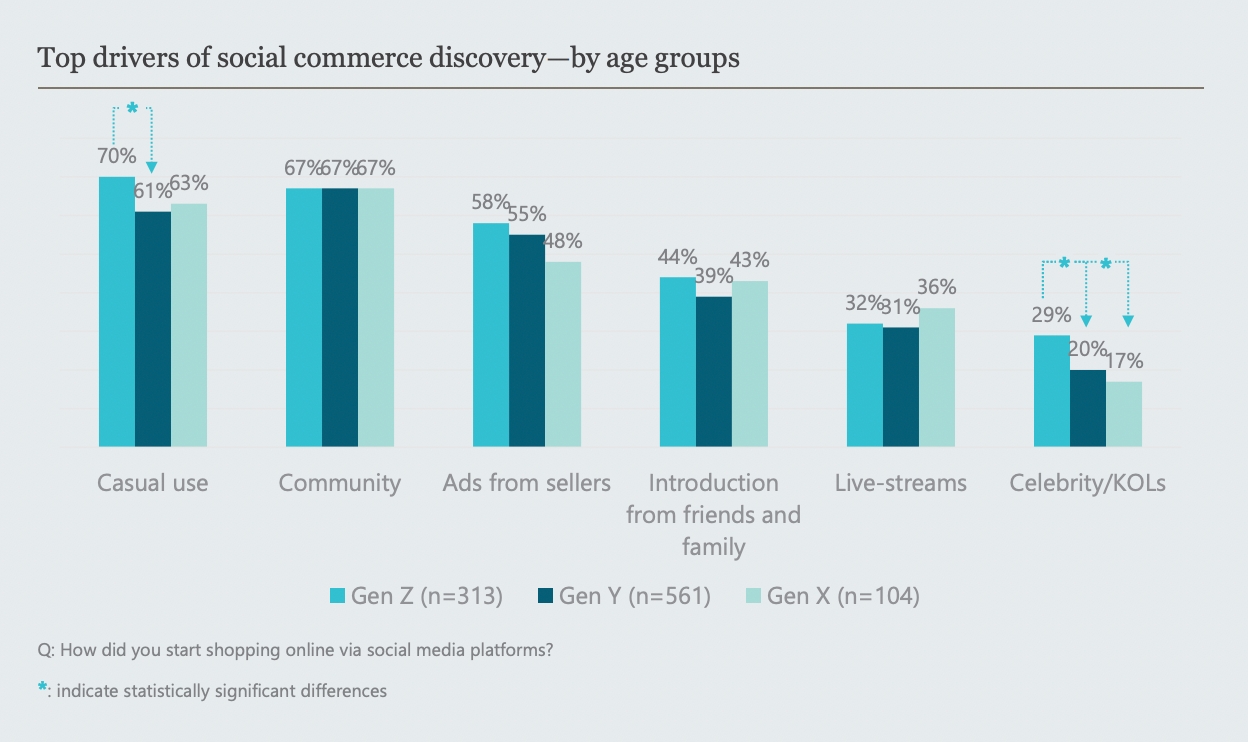Vietnam’s use of social media has evolved over the years. With the different features added regularly by Facebook, Instagram, TikTok, and homegrown app Zalo, social media platforms have gone from being a chat-and-call channel to connect with friends and family to now a shopping medium for basically everything — from fashion to food and home appliances.
In fact, social media is considered to be the fourth most popular e-commerce channel in Vietnam, next to Shopee, Lazada, and Tiki. The primary social media platform for social commerce is Facebook (94%), Zalo (49%), Instagram (31%), and TikTok (23%).
A new study conducted by market research firm Decision Lab and non-profit trade association MMA Vietnam reaffirmed the power of social media among Vietnam’s young population and how it's driving the digital economy.
According to the report released Wednesday, 46% of consumers started adopting social commerce around 2-5 years ago, marking the time frame for social commerce’s surge in popularity in Vietnam. And in Q4 2021 alone, 27% of Vietnamese consumers utilized social commerce to make online purchases. 72% of the surveyed said they adopted social commerce because it’s “convenient” to use. Given social media’s large presence in Vietnam, it’s easy for both merchants and consumers to interact and complete transactions. Prices (54%) and great experience (49%) are other drivers of social commerce adoption.
More than 80% of consumers agree that Facebook is the easiest-to-use social commerce platform. Meanwhile, Instagram, another Meta platform, stands slightly higher than other platforms in terms of entertainment values.
“I like the fact that Facebook has chatbots, which can answer common questions, unlike e-commerce shops where I’d have to wait long to receive answers,” said Vinh Long, a 21-year-old consumer.
Many of those who have used Facebook to buy goods also appreciate the platform’s personalized and rare deals.
Here are some of the most important findings from Decision Lab and MMA Vietnam’s ‘The State of Social Commerce & Live Streaming in Vietnam’ report.
Generational differences

Fashion and cosmetics reign as the most popular goods categories across all social commerce channels, considering that Gen Z and Millennials dominate social media traffic in Vietnam. The report saw significant generational variations in frequently purchased goods. For example, young consumers were more drawn to fashion items, while Gen X consumers purchased electronics and home appliances. Snacks also follow not too far behind, thanks to Vietnamese consumers' love for after-meal nibbles.
Product exposure

Community (67%), casual use (64%), and ads (55%) are the top drivers for social commerce discovery on social platforms. Vietnamese people’s high entrepreneurial spirit has led to the emergence of online communities or groups where people can easily sell and buy products.
For Gen Zs, casual scrolling through the app is enough to expose them to products and services available for them. Celebrity/KOLs are also more effective for this age group compared to the rest.
Interestingly, more Gen X users first discovered social commerce through watching live streams.
Trust is a big concern

While it’s convenient and easy to navigate, social media can also be very tricky for consumers. There were cases where the products delivered do not match the photos posted on the merchant’s social media account. Because of deceptive advertising, it has become a problem for sellers to maintain a core customer base and gain trust.
Late delivery, wrong order, and negative interactions with shop owners also contribute to the negative experiences of consumers after buying goods via social media.

This is why most Vietnamese consumers rely on reviews on shop fanpages before confirming their orders. 68% read reviews from previous customers, 58% solicit information from friends and family, 50% chat with the owner and 34% adopt a trial-and-error approach.
Women are 1.14x more likely to read shop reviews and listen to friends and family than men in learning more about online shops. They are also slightly more willing to try buying from shops once to gauge their trustworthiness.
Fanpages matter

Shops’ fanpages are the most prominent transaction points, with 69% of consumers making purchases directly through the fanpage. This should urge brands and business owners to optimize their fanpage presence to better convert customers. True to the social nature of social commerce, 55% of transactions are made through less formal settings such as personal accounts and in communities. Only 36% of consumers buy directly from live streams.
Additional offline presence means credibility

Since social media platforms do not really protect consumers from fraud or purchasing risks, many trust shops that are already familiar with them and those that have physical stores. In contrast, Vietnamese consumers also have low trust in celebrity/KOLs when they would rather try new shops before buying from famous influencers. Shops owned by relatives or acquaintances are also “more trustworthy” for consumers.
Different channels, different attributes

Each platform being used for online shopping has its own unique attributes that create either a positive or unsatisfactory experience for consumers. Facebook topped as the easiest to use, while Instagram was valued for the entertainment it brings to users. Zalo was considered convenient by most consumers; while products bought on TikTok are delivered quicker than other apps.
All platforms could improve by implementing feedback verification features to boost consumer confidence when buying on social platforms. Goods return support, price comparisons, and fraud report features are other commonly requested addition for Facebook, Instagram, and Zalo. However, TikTok users desired a more direct way to make purchases and built-in customer support within the app.
Find out more about the state of social commerce and live-streaming in Vietnam here.
